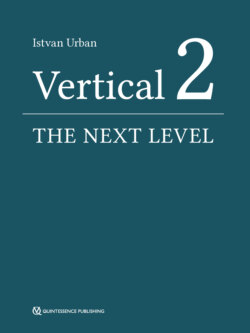Читать книгу Vertical 2: The Next Level of Hard and Soft Tissue Augmentation - Istvan Urban - Страница 11
Dense versus perforated membrane
ОглавлениеThe use of a membrane in GBR has been evaluated successfully for decades in multiple clinical and preclinical investigations. The role of the membrane has been determined to exclude competing cells such as fibroblasts. The clinical experience demonstrated that an important role of the membrane is to stabilize the bone graft. This has been well demonstrated in the Sausage technique using a collagen membrane and titanium pins for immobilization. In the author’s experience, the Sausage technique has resulted in the best bone quality and is usually faster and better than PTFE membranes. The native collagen membrane allows transvascularization and a possible accumulation of osseoinductive stimuli from the periosteum. In addition, the fast resorption of the collagen may also play a part in the maturation of the graft, since the periosteum holds vessels as well as mesenchymal cells that can turn into bone-forming cells. Therefore, a perforated membrane might help in bone formation. The goal is to develop ‘sausage-like’ bone quality faster.
One idea was to perforate PTFE membranes to allow faster bone maturation. In several preclinical investigations, different aspects of this idea were investigated, as is shown in the following subsections.
